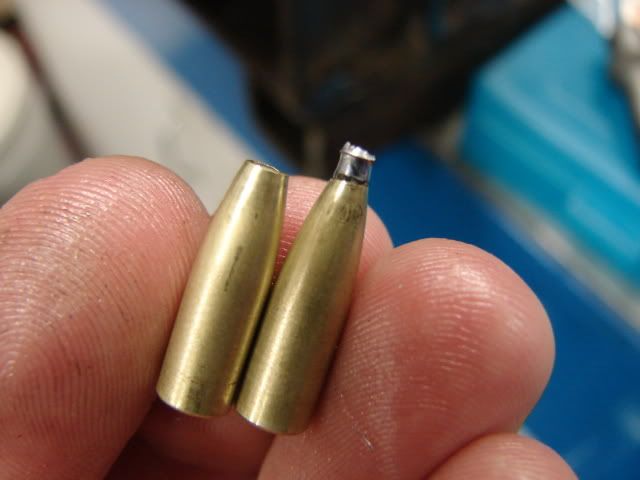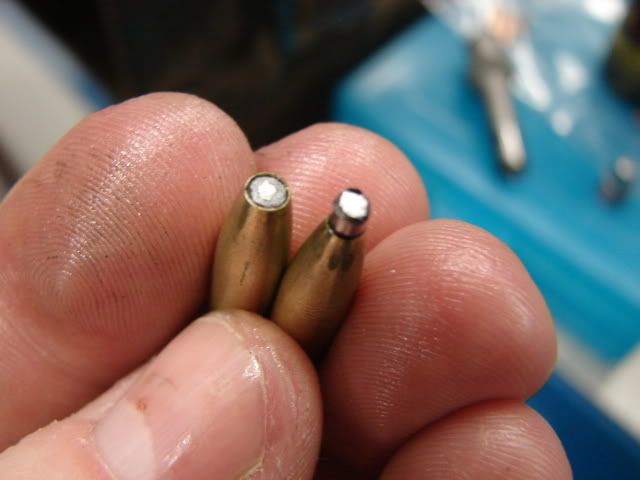Hey, everyone. I'm new to swaging and new to the forum and have a few questions that I couldn't seem to find any answers for. It's probably stuff that everyone already knows the answers to so sorry in advance if it sounds dumb.
I'm a CNC machinist and I've already made a de-rimming die/punch set and it seems to work pretty good so far (banged out 1000 cases so far). I've also made a lead wire extruding die (haven't tested it yet) based on what some other people on here have done. Next on the list is the core sizing die. After looking at some of the work people have done on core-seating and point-forming dies....I may just buy the last two to avoid the aggravation and time involved in making them.
To the main point: I've seen some pictures of some boolits made from .22lr cases and while most of them seem to have lead points, I've seen a few that appear to be closed base FMJ's (head stamps on the base but the point looks fully closed).
Am I correct in assuming one would use the same point forming die one would use for lead tips except the jacket just forms in on itself to close the tip? Or is there something else I'm missing.
How heavy of a FMJ is possible to make with .22lr cases? It seems that 55gr flat base is no problem, but what about 62's? Also, what about boat tails? How heavy a FMJ could you make with a boat tail?
Any info would be greatly appreciatedand thanks in advance

|
   
   
|


|



 Reply With Quote
Reply With Quote





















